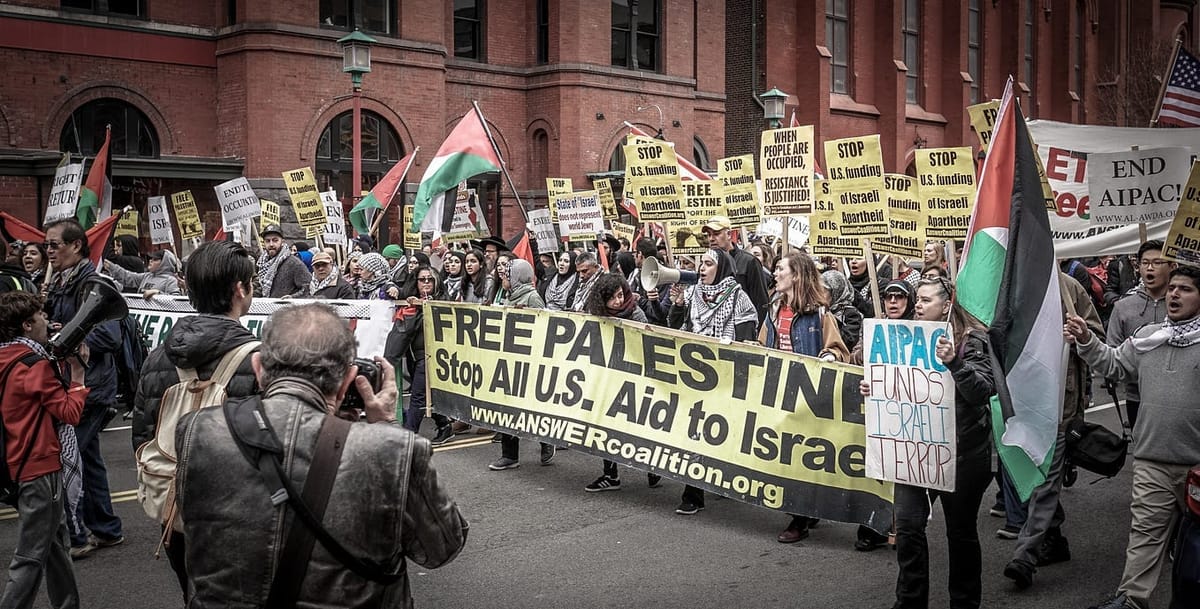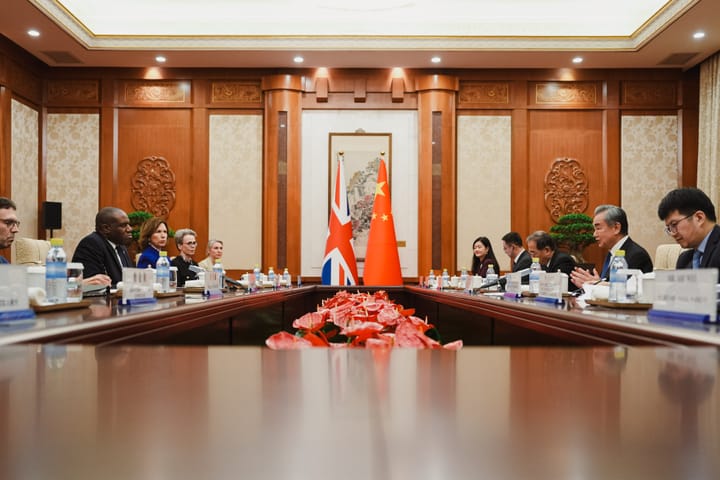Oil, Alliances, and Warfare: The Middle East's Delicate Balance

In a small, densely populated region thousands of miles from the world’s largest capitals, conflicts erupt with alarming frequency—and their effects are felt across the globe. The Middle East, long a flashpoint for political tensions, has an enormous influence on global affairs, sparking fiery debates, campus protests, and diplomatic crises.
Over the past twelve months, there has been an endless outpouring of news from the Middle East, focusing on the Israel-Hamas conflict in the Gaza Strip. Last October, the Gaza-based terrorist movement, Hamas, executed an invasion in which they killed 1,200 people and took 251 Israelis hostage. Since then, Israel has responded with a barrage of airstrikes in an attempt to subdue Hamas militants, unfortunately killing over 43,000 Palestinians in the densely populated Gaza strip. While the U.S maintains its support of Israel, the war has resulted in massive uproar across the world, including within the U.S, with some believing it to be a genocide. The United States needs to increase in presence within the Middle East as a mediator to prevent a wider conflict.
Multiple Arab countries and organizations have responded to Israel’s continued bombardment of Gaza, particularly Iran and its proxies, including the Lebanese political party Hezbollah and the Houthis, a Yemeni group. Israel has also engaged in a war with Hezbollah along the Israel-Lebanon border since the outbreak of the conflict in Gaza. This has escalated in recent months, with Israel carrying out two waves of attacks involving explosive pagers within Lebanon. Additionally, in November 2023, the Houthis began bombarding cargo ships passing through the Red Sea, disrupting international trade. Almost 25 percent of European imports and 10 percent of European exports from the Middle East and Asia travel through the Red Sea. While a United States-led international fleet has been able to disable many attacks, commercial ships are continuing to be targeted and many remain hesitant to use the waterway, creating major concern over trade and shipping through the duration of the war.
The region is becoming increasingly polarized, with countries either taking the side of the United States and Israel or that of Iran, Hezbollah, and Hamas. But as the epicenter conflict reaches its thirteenth month, there has been a significant shift in both the focus and attitude of the war. The assassination of a top Hamas leader, Ismail Haniyeh, at the Iranian presidential inauguration, not only reduced Hamas’s strength but also incited a major uproar from Iranian proxies including Hezbollah, a much stronger opponent.
This conflict has the potential to erupt into a greater war throughout the Middle East which would endanger countless lives and undoubtedly send shockwaves across the globe.
Israel has begun a head-on ground invasion, in which they are attempting to drive Hezbollah away from the Israeli-Lebanese border, to create a buffer zone. There’s a possibility of a large-scale aerial campaign, specifically with drones, that could be used to target both Hezbollah and Iranian military sites and ammunition stockpiles. This alternative might be more likely as it would minimize the involvement of Israeli civilians, it would, however, harm civilians on the other side. Israel has proven resilient against missile barrages, intercepting almost all of the hundreds of Iranian rockets with help from the United States and Jordan. Although this campaign might be less damaging to Hezbollah, it could still prompt a ceasefire between the two. A non-violent resolution isn't out of the question, however. Thus far, negotiations between the sides haven’t been very effective. Envoys from Israel, Egypt, the United States, and Qatar met in Doha on Oct. 28 to discuss an end to the conflict, but negotiations were largely unsuccessful due to disagreements over Israel’s future presence within the Gaza Strip. The United States strongly supports the two-state solution, however, it will need to intervene so that the two sides can enter into negotiations. Without an adequate consensus, the threat of war will always be present.
In the event of a greater conflict, the supply of global crude oil would be impacted. Estimates from the research firm Clearview Energy Partners suggest a direct attack on Iranian infrastructure and reserves could see a price increase of $13 per barrel, while a scenario in which Israel blocked Tehran’s strategic Strait of Hormuz could raise that to $28.
Rising oil prices would have a chain effect on the manufacturing ability of major nations across Europe, with nations like Germany in particular already suffering a decline in business productivity from high energy prices due to the Russo-Ukraine war. Iran, however, would be perhaps the most affected by such a crisis, as a lockdown of its facilities would place a significant burden on its economy. Crude oil and petroleum exports account for 23% of its wealth, with Iran's oil companies earning about $53 billion in net oil exports in 2023. Such a crisis would put a strain on other Iranian industries, and its people would likely suffer from economic insecurity in addition to the war.
Additionally, disruption in key trade routes such as the Strait of Hormuz and the Suez Canal could cause a worldwide recession, with developing economies being hit the hardest. Analysis from the International Monetary Fund found that current disruptions in product and supply out of the Middle East would significantly hamper global growth which is projected to be 2.7% in 2025, well below the 2010-2020 average of 3.1%.
The U.S. needs to more effectively utilize its relationship with its Arab allies of Turkey, Qatar, and Saudi Arabia to put pressure on Hamas to surrender and release all hostages. Netanyahu has stated that Israel won’t stop its campaign in Gaza until all hostages are returned, so the United States and its allies need to work with Israel to ensure this happens as quickly and safely as possible. The U.S. should also look to address the Lebanese government, which has fallen into the shadow of Hezbollah, to dismantle the paramilitary group’s control. While anti-U.S sentiment is apparent in certain parts of Lebanon, many strongly disapprove of Hezbollah and the U.S has expressed interest in working with the Lebanese Armed Forces (LAF) to restore the government’s ‘sovereignty’. Additionally, Hezbollah has been significantly weakened over the past two months following Israeli attacks and the demise of their leader Hassan Nasrallah. The introduction of the new ‘progressive’ Iranian president Masoud Pezeshkian is also seen as a seed of hope for the West. Pezeshkian is a reformist, not only advocating for women’s rights in Iran but also in favor of increasing ties with Europe.
Given these developments, the U.S. should capitalize, increasing funding towards the LAF and offering an olive branch to Pezeshkian, to establish better relations with Iran and squeeze Hezbollah out of power.
Overall, the stakes are very high: a broader war could destabilize the Middle East for years to come, strain international alliances, and create a humanitarian crisis that extends far beyond the borders of Israel, Gaza, and Lebanon. For the United States and its allies, balancing support for Israel with efforts to prevent a wider war will remain a delicate and urgent challenge. The United States should encourage Israel to end its military operation, while increasing its influrence in the region as a mediator, engaging with different actors to introduce a diplomatic solution before oil turns to blood.



